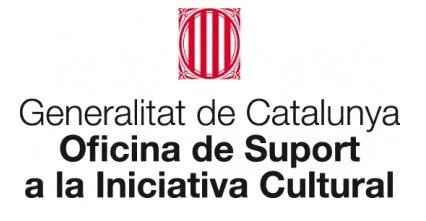Lloc, lluny, llar
2020/2021
En colaboración con Nau Côclea / OSIC Generalitat de Catalunya
El caminar como práctica artística, el arte cómo cartografía del existir. Un trabajo de investigación basado en la travesía del Grand Tour 2020, la sexta edición de la caminata organizada cada año por Nau Côclea en territorio catalán.
Grand Tour 2020: mapa de viaje II (detalle), técnicas mixtas sobre papel, 150x300 cm.
El punto de partida de este trabajo de investigación ha sido el Grand Tour 2020, la sexta edición de la caminata organizada cada año por Nau Côclea en territorio catalán. El Tour de este año se desarrolló entre el 9 y el 29 de agosto del 2020, caminado unos 350 km desde Tàrrega hasta el Centre d’Art i Natura de Farrera, durante el cual han ido alternándose hasta más de veinte personas.
El trabajo plástico se ha desarrollado a través del mapa, entendido aquí en su sentido originario, así cómo descrito por Sebastián de Covarrubias: “Mapa, llamamos la tabla, lienzo o papel donde se describe la tierra universal, o particularmente, puede venir de mappa que quiere decir lienzo o toalla, y particularmente la que los Pretores en los juegos Circenses enviaban por señal para que se empezasen, la cual estaba blanqueada o engredada, como si dijésemos almidonada; porque el lienzo sobre que se ha de describir la tierra y mar y sus partes se ha de aparejar de esa forma, la llamaron mapa y mappa mundi, y por esta causa también a estas descripciones llamamos lienzos, por estar en lienzo” (Sebastián de Covarrubias, Tesoro de la lengua castellana o española (p. 539). Madrid, 1611).
Las rutas, el texto, las vivencias y los topónimos se han vuelto los elementos fundamentales de un lenguaje finalizado a la construcción de ocho mapas, pasando de lo topográfico a lo conceptual y, aún más allá, a la abstracción del territorio.
De los 21 días de la travesía, 15 fueron de desplazamiento linear, 3 dedicados a rutas circulares y 3 de descanso. Las etapas principales del viaje fueron: Tàrrega, Penelles, Balaguer, Sant Llorenç de Montgai, Les Avellanes, Àger, Barranc del Bosc (Moror), Collmorter, Tremp, Aramunt, La Pobla de Segur, Llaràs, Montardit de Baix, Altron, Llavorsí, Farrera.
Routes day by day (Wikiloc)
Entire tour (Google Maps)
"LLoc, lluny, llar", presentación en Nau Côcolea, 2021
Este primer acto de La Entrega se compone de dos partes principales. La primera es una travesía de 350 km realizada a pie durante 21 días por el artista, desde su estudio en Barcelona —ubicado en el centro de arte contemporáneo Piramidón— hasta el Centre d’Art i Natura de Farrera, un pequeño pueblo de los Pirineos leridanos situado a 1300 metros de altura. La ruta se desarrolló uniendo seis centros de arte —Piramidón (Barcelona), Centre d’Art Maristany (Sant Cugat), Can Serrat (El Bruc), Museu de Montserrat (Montserrat), Konvent (Berga) y Centre d’Art i Natura (Farrera, Lleida)— y cruzando ocho comarcas, desde el nivel del mar hasta la montaña, alcanzando una altura máxima de 2500 metros.
La segunda parte del proyecto tuvo lugar durante la residencia en el Centre d’Art i Natura de Farrera, donde el artista realizó la mayor parte del trabajo basándose en el material recopilado y producido durante el camino. El soporte principal de toda la producción es el papel, preparado en diferentes formatos —entre 50×70 cm y 140×200 cm— y doblado como suelen estar los mapas. Parte del material fue transportado durante la caminata, mapas en blanco utilizados como cuadernos de viaje o de bitácora, mientras que el resto se destinó al trabajo de residencia, profundizando la investigación iniciada durante la travesía.
Gracias a:
Kati Riquelme, Andrea Leria, Andrea Barello, Kike Bela and The Good Good, Hugo Vázquez, Joana Cervià and Josep Rubio, Rosa Lendinez, Jordi Martínez-Vilalta, Alicia Calle, Konvent, Miquel Martínez-Vilalta and Anna Motis Berta, Marga Bruna, Javier, María and Nacho Pagonabarraga, Natalia Carminati, Paula Bruna, Marc Badia and his whole family, Claudia Karina Godoy, Carlos Puyol, Lluís Lobet and Centre d’Art i Natura of Farrera, the whole community of Farrera, Antoni Jove and Roser Sanjuan, La Panera, Jia-ling Hsu, Pau Cata, Sole Pieras, Ivan Franco Fraga, Aida Mestres, Andreu Dengra Carayol and Centre d’Art Maristany, Sophie Blais, Sarah Goodchild Robb and Can Serrat, CDAN of Huesca, Raül Maigí and the Montserrat Museum, Josep Estruch and Montserrat Rectoret-Blanch, Mireia C. Saladrigues, Fede Montornes, David Armengol, Alberto Gil Cásedas, Pilar Parcerisas, William Truini, Guillermo Pfaff, Josep Maria Cabané, Sandra Sanseverino, Montse Bonvehi, Club Excursionista de Gràcia, Piramidón…
Con el apoyo de:




